Qingyang Zhouzu Temple: Where Nature Meets Spirituality in Sichuan
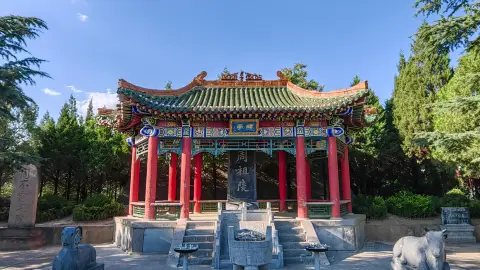
An Essential Guide to Visiting Qingyang Zhouzu Temple
Nestled within the serene landscapes of Gansu Province, the Qingyang Zhouzu Temple, also known as the Zhouzu Mausoleum, stands as a testament to the region’s rich cultural heritage and historical significance. This sacred site, perched on the slopes of Zhou Zuling Mountain, is not only a resting place for the revered ancestors of the Zhou dynasty but also a captivating destination for travelers seeking to connect with ancient traditions and breathtaking natural beauty.
As you ascend the 822 stone steps leading to the temple, you’ll be enveloped by the tranquility of dense forests and the melodic whispers of the wind, setting the stage for an unforgettable journey. The architectural elegance of the temple complex, marked by its intricately inscribed archways and solemn halls, invites reflection and reverence. Here, amidst the towering cypress trees and the profound silence, one can almost hear echoes of the past—stories of the Zhou people’s farming civilization and their enduring legacy.
Visitors are greeted by stunning views of the Loess Plateau, making this not just a spiritual pilgrimage but a visual feast for nature enthusiasts and photographers alike. Whether you are drawn by the allure of ancient history, the beauty of the surrounding landscapes, or the intriguing local culture, the Qingyang Zhouzu Temple promises an enriching experience that will linger in your memory long after you leave its hallowed grounds.
Prepare to embark on a journey that weaves together history, nature, and spirituality in one of Gansu’s hidden gems.
In This Guide
- An Essential Guide to Visiting Qingyang Zhouzu Temple
- The Rich History and Legends of Qingyang Zhouzu Temple
- Main Highlights: What You Absolutely Can’t Miss
- Planning Your Visit: A Practical Guide
- Tickets: Prices, Booking, and Tips
- How to Get There: A Complete Transportation Guide
- Local Cuisine and Accommodation Nearby
- Frequently Asked Questions
- Final Thoughts on Your Trip
The Rich History and Legends of Qingyang Zhouzu Temple
Nestled amidst the serene landscapes of the Loess Plateau, the Qingyang Zhouzu Temple, also known as the Zhouzu Mausoleum, stands as a testament to the rich history and cultural heritage of the Zhou people. This sacred site is not merely a resting place; it is a vibrant symbol of the ancient civilization that once thrived in this region.
The temple is dedicated to Bu Cheng, the legendary ancestor of the Zhou dynasty, who is celebrated for his wisdom and agricultural innovations. According to historical records and folklore, Bu Cheng is revered as the progenitor of the Zhou people, whose contributions laid the foundation for what would become one of China’s most influential dynasties. The temple complex is strategically located on the Zhou Zuling Mountain, offering a panoramic view of the lush surroundings that have been shaped by centuries of farming practices.
As visitors ascend the 822 stone steps leading to the main hall, they are greeted by a meticulously designed cultural area that reflects the architectural elegance of ancient China. The grand Zhaozhou Saint Ancestor Archway, inscribed with powerful characters by General Yang Chengwu, marks the entrance to this hallowed space. The intricate couplets engraved on the pillars resonate with the ethos of the Zhou people, celebrating their connection to nature and the world beyond.
Upon entering the main hall, one is captivated by the solemnity of the three statues representing Bu Cheng, his son Ju Tao, and grandson Liu. These figures not only embody the lineage of the Zhou dynasty but also serve as reminders of the enduring legacy that has shaped the identity of the local populace. The adjacent Zhouzu Monument Pavilion houses a significant stele, further commemorating the historical importance of this site.
The temple and its surroundings are steeped in legends, many of which are deeply interwoven with the agricultural practices that have defined the region for millennia. The Zhou people are often credited with pioneering advancements in farming techniques, which allowed them to cultivate the challenging terrain of the Loess Plateau. This connection to agriculture is celebrated in various festivals and rituals held at the temple, where locals honor their ancestors and seek blessings for bountiful harvests.
In addition to its historical significance, the Zhouzu Temple is a serene sanctuary for those seeking to connect with nature and reflect on the passage of time. The lush cypress forests surrounding the site offer a tranquil retreat, inviting visitors to pause and ponder the legacy of the Zhou ancestors.
For international travelers, a visit to the Qingyang Zhouzu Temple is not just a journey into the past; it is an opportunity to experience the fusion of history, culture, and nature. As you explore this remarkable site, you will not only gain insight into the Zhou dynasty’s contributions to Chinese civilization but also witness the enduring spirit of a community that continues to honor its roots amidst the ever-changing landscape of modern life.

Qingyang Zhouzu Temple.
Main Highlights: What You Absolutely Can’t Miss
When visiting Qingyang Zhouzu Temple, a journey steeped in history and cultural significance awaits. Nestled in a serene landscape, this site is not just a mausoleum; it embodies the legacy of the Zhou dynasty and offers a unique glimpse into ancient Chinese civilization. Here are the must-see highlights that you absolutely cannot miss:
1. Zhaozhou Saint Ancestor Archway
As you approach the temple, the majestic Zhaozhou Saint Ancestor Archway will greet you. Inscribed with the powerful characters “Zhaozhou Saint Ancestor” by General Yang Chengwu, this archway sets the tone for your visit. Take a moment to appreciate the intricate couplets adorning the four pillars, which reflect the wisdom and achievements of the Zhou ancestors. The archway is not just an entrance; it’s a portal into the profound history that unfolds within.
2. The Main Hall of Zhouzu
Upon passing through the archway, you’ll find the Main Hall of Zhouzu, elegantly structured on a raised platform. Here, you can pay your respects to the three significant figures of the Zhou lineage: Zhou ancestor Bucheng, his son Ju Tao, and grandson Liu. The hall’s solemnity is accentuated by the ten portraits of festivals and imperial servants lining its walls, creating an atmosphere of reverence and respect for those who shaped Chinese history.
3. Zhouzu Mausoleum
Make your way to the northwest corner of the temple complex to find the mausoleum of Zhouzu Bucheng. This resting place holds deep significance as it symbolizes the origins of Zhou farming civilization. The tranquil surroundings provide a perfect backdrop for reflection and understanding of the ancestral lineage that influenced much of China’s cultural heritage.
4. Zhouzu Monument Pavilion
Adjacent to the mausoleum is the Zhouzu Monument Pavilion, where you can admire the stele inscribed with the characters “Zhou Zuling.” This monument not only serves as a tribute to the ancestors but also as a testament to the craftsmanship of ancient Chinese stonemasons. The pavilion offers a peaceful spot to contemplate the history that has unfolded here over millennia.
5. Eight Diagrams Pavilion
On the southeast side of the Zhouzu Hall, the Eight Diagrams Pavilion presents a unique architectural style that invites visitors to explore its significance in Chinese philosophy. This pavilion is more than just a structure; it symbolizes the harmony and balance that are central to Zhou culture. Don’t forget to capture a few photographs here, as the pavilion’s design is both striking and serene.
6. Thirty-Eight Kings Temple
A short walk from the Eight Diagrams Pavilion leads you to the Thirty-Eight Kings Temple. This temple, with its elegant design and lifelike statues, pays homage to the historical figures who have defined the Zhou dynasty. Each statue tells a story, and the artistry involved in their creation is truly commendable.
7. Scenic Views
Finally, don’t miss the breathtaking views from various vantage points around the temple complex. As you ascend the 822 stone steps from the parking area, the panoramic views of the surrounding cypress forest and the vast Loess Plateau will captivate you. Bring your camera to capture the stunning landscapes that serve as a reminder of the natural beauty of this region.
Practical Tips
- Best Time to Visit: The ideal months to explore the Zhouzu Temple are from May to September when the weather is mild and the vegetation is lush.
- Transportation: Renting a car is recommended due to the complex road conditions in the Loess Plateau. Alternatively, local taxis can provide a convenient option.
- Cultural Etiquette: Respect the local customs, especially in sacred areas, and take care to maintain the tranquility of the site.
With its rich history and stunning architecture, Qingyang Zhouzu Temple is a cultural treasure that deserves a place on your travel itinerary. Whether you’re a history buff, a culture enthusiast, or simply seeking a peaceful retreat, this site offers an unforgettable experience.
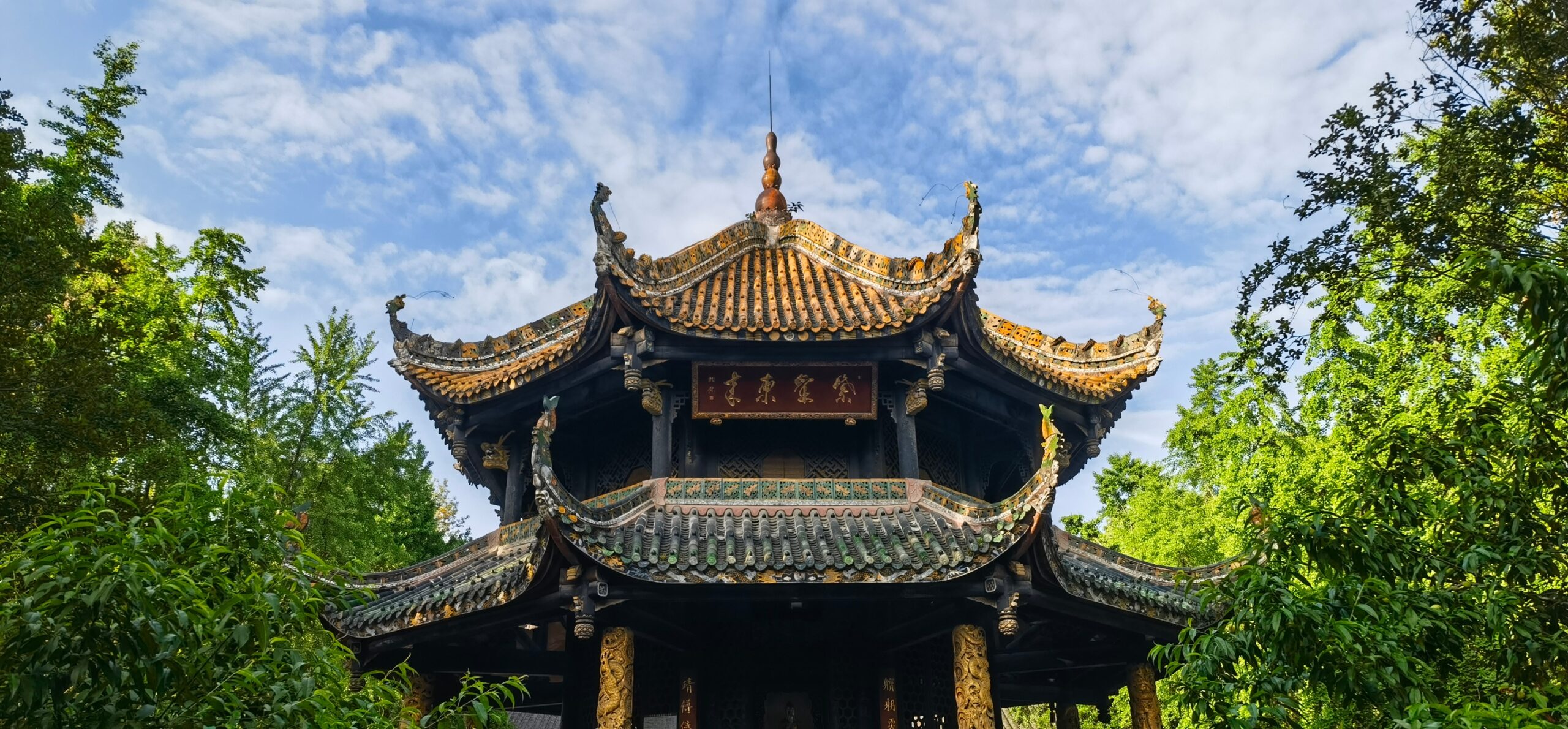
Qingyang Zhouzu Temple.
Planning Your Visit: A Practical Guide
When planning your visit to the Qingyang Zhouzu Temple, also known as Zhouzu Mausoleum, you’ll discover a rich tapestry of history, culture, and stunning natural beauty. This guide will help you navigate your journey to this ancient site, ensuring a smooth and enjoyable experience.
Getting There
Location: The Zhouzu Mausoleum is located in Dongshan, Qingcheng County, Qingyang City, Gansu Province.
Transport Options:
– By Train: The nearest major cities are Xi’an and Lanzhou. High-speed trains run regularly:
– Xi’an to Qingyang: Approximately 2 hours, around 150 RMB for a ticket.
– Lanzhou to Qingyang: Approximately 3 hours, around 180 RMB for a ticket.
-
By Car: Renting a car is recommended due to the varied terrain and road conditions. Expect to pay around 300 RMB for a day rental.
-
Local Transport: Taxis are available from Qingyang Station to the Zhouzu Mausoleum (about 30 RMB, 20 minutes).
Best Time to Visit
The ideal time to explore the Zhouzu Mausoleum is between May and September. During these months, the weather is mild, allowing for comfortable exploration of the site and surrounding areas. Be mindful of the significant temperature differences between day and night, and consider packing a light jacket.
Entrance Fees
- Entrance to Zhouzu Mausoleum: 50 RMB
- Additional sites in the area may have separate fees, so check locally for the most current information.
What to Expect
Exploration Duration: Allocate about 1 hour for a thorough visit to the mausoleum and its surrounding cultural area.
Key Attractions:
– Zhaozhou Saint Ancestor Archway: A grand archway with inscriptions that pay homage to the Zhou ancestors.
– Zhouzu Hall: The main hall houses statues of Zhou ancestors and offers a serene ambiance for reflection.
– Zhouzu Monument Pavilion: Features a commemorative stele that captures the essence of the site.
– Eight Diagrams Pavilion and Thirty-Eight Kings Temple: These structures highlight the rich cultural significance of the Zhou dynasty.
Nearby Activities
To enhance your visit, consider exploring the surrounding attractions:
– Longdong Grand Canyon: A stunning natural landscape for hiking and photography, located about an hour’s drive from the mausoleum.
– Beishiku Temple: Famous for its ancient Buddhist grottoes, this site is a cultural gem not to be missed.
Accommodation Recommendations
For a unique experience, consider staying in a cave dwelling homestay, which offers an authentic feel of the Loess Plateau. Alternatively, there are comfortable hotels in Qingyang city, such as the Qingyang Hotel, which provides modern amenities and convenient access to local attractions.
Dining Suggestions
While in Qingyang, don’t miss out on local cuisine. Try heluo noodles, a specialty in the region, often served with flavorful lamb broth. The Xifeng Night Market is a great spot to sample various local dishes and enjoy the vibrant atmosphere.
Travel Tips
- Road Conditions: Be prepared for winding roads and varying conditions on the Loess Plateau; hiring a local driver can enhance your safety and comfort.
- Cultural Etiquette: Respect local customs and traditions, especially at temples and historical sites.
- Photography: Capture the beauty of the mausoleum, but note that flash photography is prohibited in certain areas like Beishiku Temple.
Conclusion
Visiting the Qingyang Zhouzu Temple offers a unique glimpse into China’s rich history and cultural heritage. With its beautiful natural settings and significant historical landmarks, it promises an enriching experience for any traveler eager to explore the depths of Gansu’s past. Whether you’re a culture enthusiast, a nature lover, or simply looking for a quiet retreat, Zhouzu Mausoleum has something special in store for you.
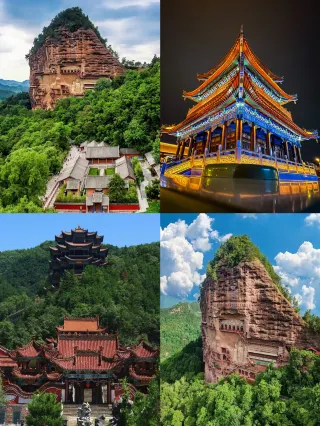
Qingyang Zhouzu Temple.
Tickets: Prices, Booking, and Tips
When planning your visit to the Qingyang Zhouzu Temple, also known as the Zhouzu Mausoleum, you’ll find it essential to know about ticket prices, booking options, and some handy tips to enhance your experience.
Ticket Prices
- Entry Fee: The ticket price for entering the Zhouzu Mausoleum Scenic Area is approximately 50 RMB. This fee grants you access to the temple complex and its beautiful surroundings, where you can explore the significant cultural and historical sites.
- Discounts: Keep an eye out for any promotional discounts that might be available. Sometimes, reduced rates are offered for students or seniors, but it’s best to confirm at the ticket counter.
Booking Options
- On-Site Purchase: Tickets can be purchased directly at the entrance of the Zhouzu Mausoleum. This is a straightforward option, especially if you prefer flexibility in your travel plans.
- Online Booking: For those who prefer to plan ahead, consider booking your tickets online through various travel platforms. This can save you time and potentially help you avoid long lines, especially during peak tourist seasons (May to September is recommended for the best weather).
Tips for Your Visit
-
Best Time to Visit: Aim to visit in the morning or late afternoon to avoid crowds and enjoy a more serene experience. Early mornings also offer clearer skies for photography.
-
Wear Comfortable Shoes: The temple complex requires a bit of walking, including climbing 822 stone steps to reach the main hall. Comfortable footwear will make your exploration much more enjoyable.
-
Cultural Respect: As a site of cultural significance, maintain a respectful demeanor. This includes dressing modestly and adhering to any rules regarding photography, especially in sacred areas.
-
Plan for Weather: The Loess Plateau can have a significant temperature variation between day and night. Bring a light jacket for cooler evenings and sunglasses or a hat to protect against the sun during the day.
-
Capture the Moments: Don’t forget your camera! The scenic views from the top of the mountain, as well as the intricate architecture of the temple, provide fantastic photo opportunities.
-
Local Transportation: If you’re not driving, consider hiring a local taxi or a car rental with a driver to navigate the area easily. This is particularly advisable due to the complex road conditions on the Loess Plateau.
By preparing in advance and taking these tips into account, your visit to the Qingyang Zhouzu Temple will be both enjoyable and enriching, allowing you to immerse yourself in the beauty and history of this remarkable site.
How to Get There: A Complete Transportation Guide
Reaching the Qingyang Zhouzu Temple (庆阳周祖陵), nestled in the serene landscapes of Qingcheng County, is a journey worth embarking on. This detailed transportation guide will help you navigate your way to this cultural gem with ease.
Getting to Qingyang
By Air
The nearest major airport is Qingyang Airport (IQN), which connects with several major cities in China. If you’re coming from international destinations, you might want to fly into either Xi’an Xianyang International Airport (XIY) or Lanzhou Zhongchuan International Airport (LHW), followed by a domestic connection to Qingyang.
- From Xi’an: Flights to Qingyang take approximately 1 hour.
- From Lanzhou: Expect a similar duration for flights, making it a quick hop to your destination.
By Train
Traveling by train is a convenient option for those already in China. High-speed trains connect major cities directly to Qingyang.
- From Xi’an: Take a high-speed train from Xi’an North Railway Station to Qingyang Station. The journey lasts about 2 hours, with ticket prices around 150 RMB.
- From Lanzhou: A direct train will take approximately 3 hours, with tickets priced around 180 RMB.
Once you arrive at Qingyang Station, you can easily access local transportation options to reach the Zhouzu Temple.
By Bus
For travelers on a budget, long-distance buses are available from nearby cities.
- From Xi’an: Buses run frequently and take around 3-4 hours to reach Qingyang.
- From Lanzhou: Expect a similar travel time, with services operating throughout the day.
Local Transportation
After arriving in Qingyang, you’ll need to make your way to the Zhouzu Temple. The temple is located approximately 20 kilometers from the city center.
Taxi: A taxi from Qingyang city center to the temple will cost around 30 RMB and take about 30 minutes. Taxis are readily available at hotels and train stations.
Car Rental: If you prefer to explore at your own pace, renting a car is an excellent option. Several local rental services are available. Make sure to hire a local driver if you’re not familiar with driving in the region, as road conditions can be complex.
Visiting the Zhouzu Temple
Once you reach the Zhouzu Temple, prepare for a scenic adventure. The temple area features a modest parking lot from which visitors must climb 822 stone steps to reach the main cultural site. This ascent is rewarded with breathtaking views and a rich historical atmosphere.
Travel Tips
- Best Time to Visit: The ideal months to explore this region are from May to September, when the weather is mild and the vegetation lush.
- Pack Smart: The Loess Plateau can experience significant temperature fluctuations between day and night. Bring a jacket for cooler evenings.
- Cultural Respect: As you explore, remember to respect local customs, especially when visiting sacred sites like the Zhouzu Temple.
With this guide, you’re well-equipped to navigate your journey to the Qingyang Zhouzu Temple, where history, culture, and nature intertwine beautifully. Enjoy your travels!
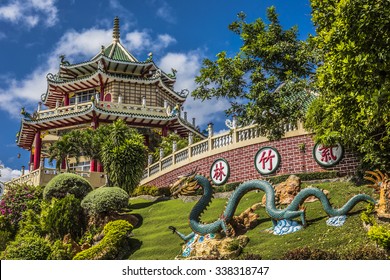
Qingyang Zhouzu Temple.
Local Cuisine and Accommodation Nearby
Visiting the Qingyang Zhouzu Temple offers not only a glimpse into the rich cultural heritage of the region but also an opportunity to savor the local cuisine and find comfortable accommodations nearby.
Culinary Delights
While exploring the temple, make sure to indulge in the local gastronomic offerings that reflect the flavors of Gansu province.
-
Heluo Noodles: A must-try dish, heluo noodles are made from buckwheat and served in a savory lamb soup. They’re often accompanied by Qingyang fragrant vinegar, which enhances the dish’s flavor. You can find these in various local eateries, particularly around night markets.
-
Lamb Paomo: This dish consists of tender lamb served with bread soaked in rich broth, creating a hearty meal perfect for travelers. You can enjoy it at the bustling Dongcheng Night Market, where the atmosphere is lively and filled with the aroma of local dishes.
-
Cold Buckwheat Jelly: For a refreshing side, try this unique dessert. It’s light and often served with a sweet sauce, making it a delightful treat after a long day of exploring.
-
Sweet Fermented Dough: End your meal with a taste of this traditional sweet, which is a popular snack among locals.
Accommodations
After a day of exploration, unwind in one of the following recommended accommodations that cater to various preferences and budgets:
-
Qingyang Hotel: Situated in the heart of the city, this hotel provides modern amenities and convenient access to local attractions. With comfortable rooms and excellent service, it’s an ideal base for exploring the area.
-
Xijia Cave Dwelling Homestay: For a unique cultural experience, stay at this homestay that offers a glimpse into traditional cave dwelling life on the Loess Plateau. It’s a cozy and authentic option, allowing you to immerse yourself in the local way of life while enjoying stunning views of the surrounding landscape.
-
Xifeng Night Market Area: If you prefer a more budget-friendly option, consider staying at one of the guesthouses or hostels near the night market. This area not only provides easy access to local dining but also allows you to experience the vibrant nightlife of Qingyang.
Practical Tips
- Best Time to Visit: May to September is ideal for exploring Qingyang, as the climate is mild and the vegetation lush.
- Transportation: Renting a car is recommended due to the complex road conditions of the Loess Plateau, making it easier to navigate between attractions.
- Cultural Etiquette: Remember to respect local customs and traditions, especially when dining or interacting with the community.
By indulging in the local cuisine and finding the right accommodation, you can enhance your experience at the Qingyang Zhouzu Temple and truly appreciate the region’s rich history and culture.
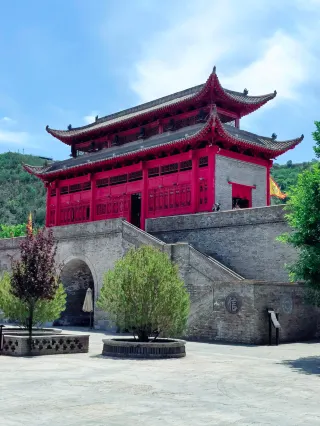
Qingyang Zhouzu Temple.
Frequently Asked Questions
Frequently Asked Questions about Qingyang Zhouzu Temple
-
What is the best time to visit Qingyang Zhouzu Temple?
The ideal time to explore Qingyang Zhouzu Temple is between May and September. During these months, the weather is mild, and the surrounding vegetation is lush, providing a beautiful backdrop for your visit. -
How do I get to Qingyang Zhouzu Temple?
You can reach the temple by taking a high-speed train to Qingyang from major cities like Xi’an or Lanzhou, followed by a taxi ride to the site. The train journey is approximately 2 to 3 hours, making it a convenient option for travelers. -
What should I wear when visiting?
Given the varying temperatures on the Loess Plateau, it’s advisable to dress in layers. A light jacket is recommended for cooler evenings. Comfortable walking shoes are essential, especially since there are over 800 stone steps leading up to the temple. -
Are there any entry fees?
Yes, there is an entrance fee to visit the Zhouzu Mausoleum area. As of the latest updates, the ticket price is around 50 RMB. This fee grants you access to the main hall and other significant structures within the complex. -
What can I expect to see at the temple?
The Zhouzu Temple complex features several notable structures, including the Zhaozhou Saint Ancestor Archway, the main hall with statues of Zhou ancestors, and the Eight Diagrams Pavilion. The site is not only a place of worship but also a cultural and historical landmark with beautiful views of the surrounding landscape. -
Is it suitable for families with children?
Absolutely! The temple and its grounds provide a safe and engaging environment for families. Children can enjoy exploring the scenic areas, and there are plenty of opportunities for family photos against the temple’s stunning architecture. -
Are there any dining options near the temple?
While there are limited dining options directly at the temple, you can find local eateries in Qingyang city that serve traditional dishes like heluo noodles and lamb dishes. It’s a great way to experience local cuisine after your visit. -
Can I take photos at the temple?
Yes, photography is generally allowed at the Zhouzu Temple. However, be respectful of the cultural significance of the site and avoid flash photography in certain areas, especially inside the main hall where it may be prohibited.
Final Thoughts on Your Trip
As your journey through the enchanting landscapes of Qingyang comes to an end, the memories of the Zhouzu Temple and its surrounding natural beauty will linger long after your departure. This sacred site, steeped in history and cultural significance, offers not just a glimpse into the past but a profound connection to the land and its ancestral stories.
The tranquil cypress forests and the majestic views from the temple grounds evoke a sense of peace, inviting reflection and appreciation for the ancient farming civilization that flourished here. Whether you climbed the stone steps to the main hall, marveled at the intricate architecture, or savored local delicacies like heluo noodles, each experience adds a layer to your understanding of this region.
As you leave Qingyang, take with you the gentle whispers of the Loess Plateau, the tales of the Zhou ancestors, and the vibrant spirit of the local culture. Whether you’re a history enthusiast, nature lover, or simply in search of an off-the-beaten-path adventure, Qingyang has something unique to offer every traveler.
May your travels continue to be filled with discovery and inspiration, and may the essence of Qingyang’s beauty remain with you, wherever your journey leads next.